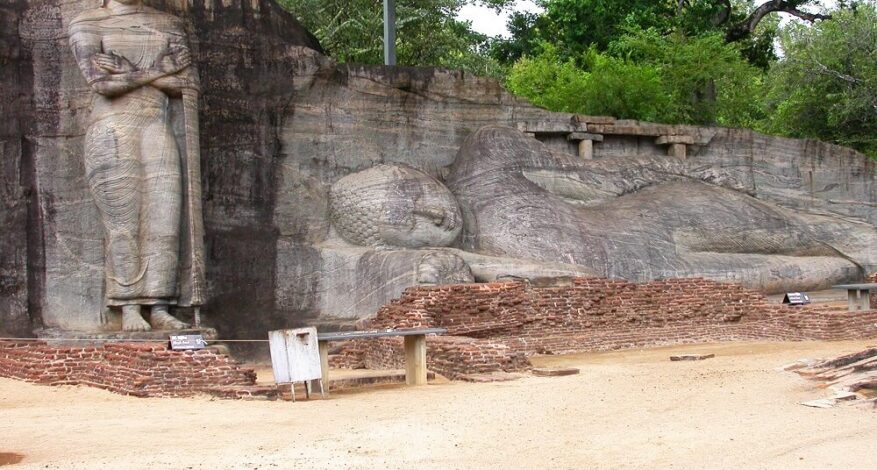Sri Lanka: a fascinating History marked by its unique Position in the Indian Ocean
Sri Lanka has left its mark on the history of South Asia. Located at the crossroads of maritime routes of the Indian Ocean, “the resplendent island” has forged its destiny through its exchanges with the outside world. Cradle of flourishing civilizations since the arrival of man on the island, Sri Lanka is inseparable from the history of neighboring India. Nicknamed “Buddha’s Tear“, the archipelago was one of the main lands of welcome and development of Buddhism in South Asia. Coveted for its ideal position in the heart of the Indian Ocean, as well as for its precious materials, the former British Ceylon had been the prey of the great Indian and European empires. Through the cultural upheavals that shook the Indian subcontinent, Sri Lanka has always known how to shape its fascinating history by going beyond the legend of its founding myths.
Author: Dr. Osmund Bopearachchi
Sri Lanka: a history between myth and reality
Sri Lanka’s rich history is matched only by its antiquity. The Indian Ocean island was marked, from Prehistoric times to the Modern Era, by a succession of civilizations and kingdoms that helped shape its unique identity. From the first traces of human occupation to the end of the colonial period, the “resplendent island” was the scene of great events that marked South Asia and the Indian subcontinent.
The lion prince: the mythical ancestor of Sri Lanka
To learn about the mythical origins of Sri Lanka, one must read the Mahavamsa (the “Great Chronicle”). It is an ancient text, written in the pāli language telling both the history of the Sinhalese and Tamil kings of Sri Lanka as well as that of Buddhism on the island. In addition, the story of the founder of Sri Lanka, Prince Vijaya, is also told.
Vijaya was the son of Sinhabahu (whose name means “lion’s arm”). The latter was himself the son of a Vanga princess (Vanga corresponds to the Bengal region of India) and a lion, named Sinha. It is said that Sinhabahu killed his father and thus became king of Vanga. He made his son, Vijaya, the regent prince of his kingdom. However, because of his bad behavior, Vijaya, along with his 700 followers, were exiled by the king. They were sent to the island of Lanka, now Sri Lanka.
According to the Mahavamsa, Prince Vijaya arrived in Sri Lanka in the 6th century BC with his 700 disciples. The day of his arrival coincides with the day of the death (or paririvana) of Gautama Buddha. This event prefigures the importance of Buddhism in the history of the island. Thus, it is assumed that the origin of the term Sinhala, which designates the descendants and their language, would be a derivative of the word meaning “lion”, in reference to the father of the founding prince of the Sri Lankan civilization.
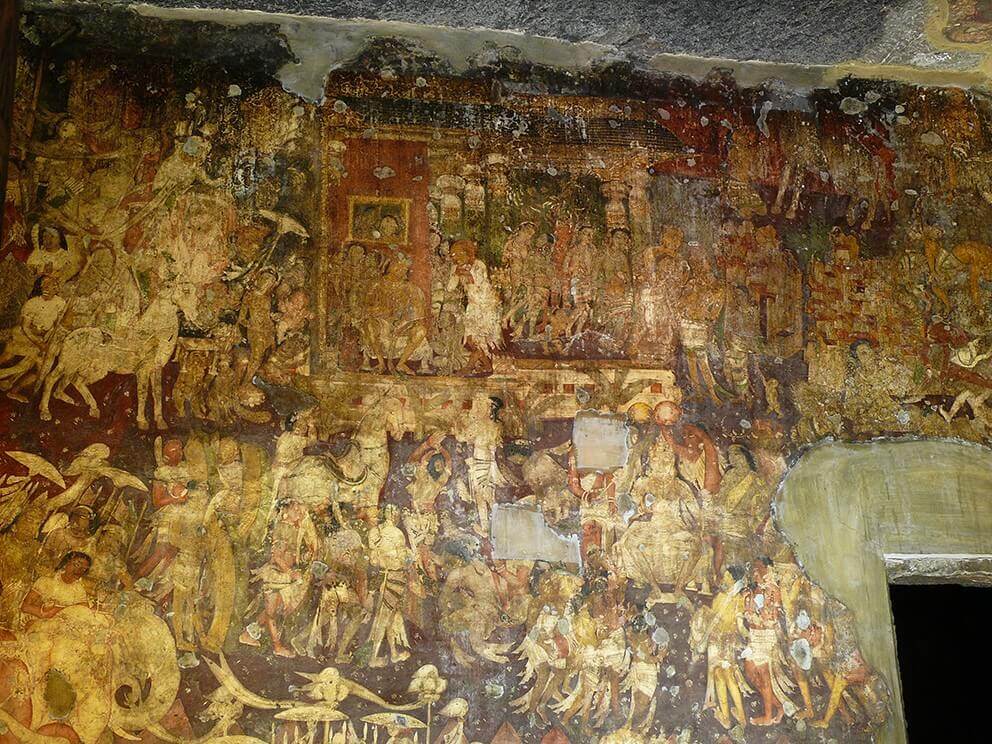
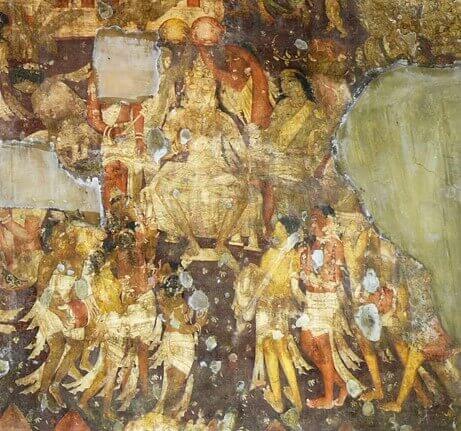
Sri Lanka’s Prehistory: the megalithic civilization
Sri Lankan prehistory is a culturally flourishing period. Archaeologists have thus been able to find traces of human occupation dating back to the Paleolithic (between -250,000 and -70,000 years ago). At that time, the inhabitants of Sri Lanka made stone tools. Such tools have been found up to the Iron Age (between 750 and 400 BC).
During the Iron Age, also known as the “protohistoric period,” Sri Lanka shared the same culture as South India. Both regions actually had the same civilization. Their inhabitants built megalithic tombs (in other words, monumental stone tombs). This civilization has left many archaeological remains, including ceramics, iron objects, agricultural tools and many graffiti in the tombs.
The megalithic tombs of Sri Lanka and South India, excavated by archaeologists, contained many personal objects belonging to the deceased. These include earthenware containers, beads and necklaces made of carnelian stones imported from Gujarat (a region in northwest India). These precious objects indicate that Sri Lanka had close relations with the rest of India, as early as protohistory.


The arrival of Buddhism in Sri Lanka and the beginning of the historical period
Sri Lanka is considered to enter its historical period with the introduction of Buddhism to the island around 246 BC. At that time, the Indian emperor Asoka sent his son Mahinda on a diplomatic mission to Sri Lanka. Asoka had converted to Buddhism and wanted his son to spread the religion in Sri Lanka. Mahinda succeeded in convincing the ruler of Sri Lanka to convert to Buddhism.
Later, Asoka’s daughter Sanghamitra brought a shoot of the Bodhi tree (the tree under which Buddha attained enlightenment) from Bodh Gaya in Sri Lanka. The nun (bikshuni) Sanghamitra established an order of Buddhist nuns there. With the support of the Sri Lankan royal family, Buddhism became the dominant religion on the island. It is one of the few countries in the world where Buddhism has been practiced without interruption from its introduction to the present day.
From the beginning of the historical period, Sri Lankan architecture was deeply influenced by Buddhism. Successive kings made it a point of honor to build religious monuments in order to show their power and to obtain, at the same time, the various spiritual benefits attributed to those who erect such buildings.
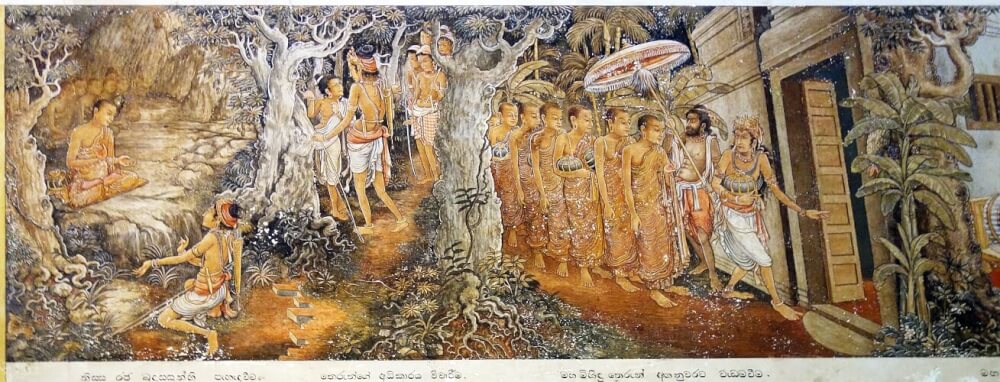
The development of Buddhist temples in Sri Lanka
The city of Anuradhapura was founded in the 4th century BC by King Pandukabhaya. It remained the island’s capital for nearly fifteen centuries, making it one of the oldest political and urban centers in South and Southeast Asia. Anuradhapura and its surroundings form an area of more than 40 km2 and consist, in addition, of the citadel and religious complexes of greater or lesser importance.
In the heart of the city of Anuradhapura was erected the Mahavihara monastery for the monk Thera Mahinda and his companions. The Mahavihara became the center of Theravada Buddhism, a branch of Buddhism that is widespread in South and Southeast Asia, sometimes referred to as the “Small Vehicle”. Over time, the Mahavihara grew into a huge complex, becoming the focal point of Anuradhapura.
By the fourth century, many other Buddhist temples and monasteries were built in the center of the Sri Lankan capital, such as the Abhayagirivihara, Dakkhinavihara, Jetavanaramavihara and Mirisvativihara. These religious centers had within them imposing stupas (monument containing the bodily relics of the Buddha or one of his disciples), bodhigharas (shrine housing a bodhi tree), patimagharas (temples of sacred images), sannipatasalas (monks’ meeting halls), danasalas (alms halls) as well as hundreds of monks’ residences.
Sri Lanka: a jewel of South Asian Buddhist architecture
Among the most famous stupas in Anuradhapura is the Mirisvatiya, erected in the 2nd century BC by King Dutugamunu. Around the Mirisvatiyihara an independent monastic complex developed. The Dakkahinavihara stupa became the center of the Sagaliya Nikaya, a school of thought that separated from the Dharmaruci Nikaya branch, thus forming two of the three schools of Sri Lankan Buddhism. The Jetavanarama Dagoba, erected in the 3rd century AD by King Mahasen, stood more than 120 m high, making it the fourth highest monument in the ancient world.
The Abhayagirivihara Monastery was built by King Vattagamini in the 1st century B.C. It is the largest Buddhist complex in Anuradhapura and the seat of Mahayana Buddhism. The complex housed a prestigious school and had connections with China, Java and Kashmir. It is estimated that its stupa was 115 m high. It is likely that its monks formed a separate community during the eighth century AD, in opposition to other monks who held certain esoteric and mystical beliefs at that time. These beliefs were particularly prevalent among the sects of Mahayana Buddhism (also called the “Great Vehicle”).
These five main monasteries were located around the citadel. They were gradually encircled by seven other smaller monasteries. Hundreds of inscriptions found on the island testify to the fact that all these monasteries were maintained by kings and nobles as well as by anonymous inhabitants donating money, land, rice fields, water tanks, customs duties, clothes, etc. The Chinese monk Fa Xian, who lived between the fourth and fifth centuries AD and stayed in Sri Lanka, says that about 60,000 Buddhist monks lived in Anuradhapura. Archaeological research confirms that there were indeed enough residential quarters for the monks to live comfortably.
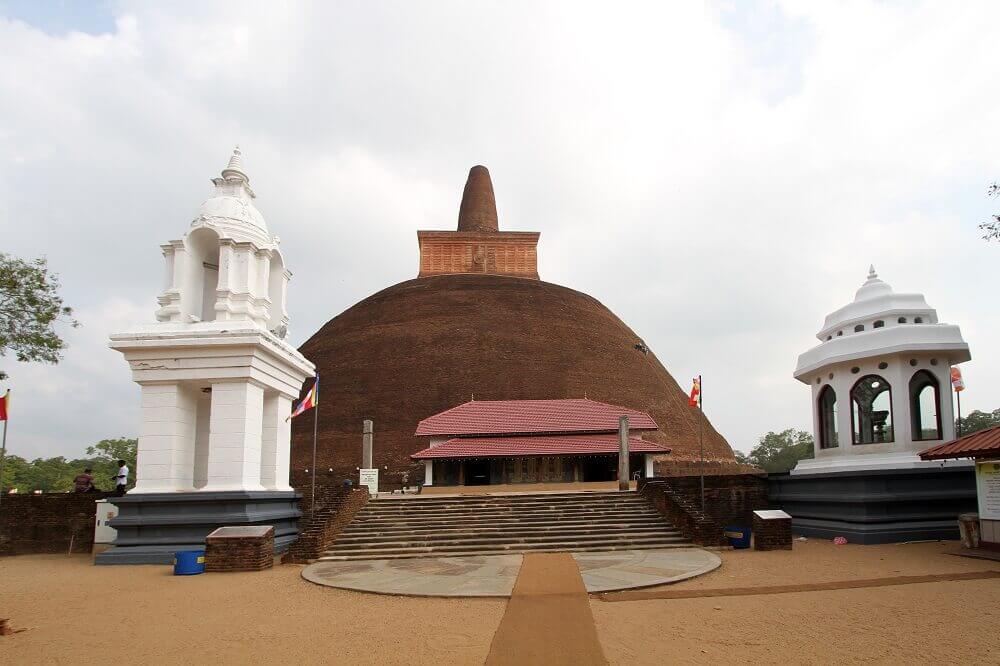
An island at the crossroads of Indian Ocean trade routes
The island of Sri Lanka has always enjoyed unparalleled economic prosperity. Early on, the islanders mastered the means of bringing water to the dry areas. Thus, these areas were irrigated through a system of efficient reservoirs and diversion canals, allowing for a flourishing agriculture.
The Sri Lankans have always taken advantage of the many bays, natural harbors, estuaries and navigable rivers of their island. These watery spaces have favored external and internal maritime trade. Its central position in the Indian Ocean also makes the island a crossroads of maritime routes between the East and the West, linking the shores of the Persian Gulf, the Red Sea and Southwest Asia to Southeast Asia and the Far East.
Their privileged geographical location allowed the Sri Lankans to export precious commodities from their island, such as gems, pearls, ivory, tortoise shells, elephants, precious wood, textiles and especially spices such as cloves, pepper and cinnamon. It was also through Sri Lanka that the other Asian regions were able to exchange their goods between East and West.
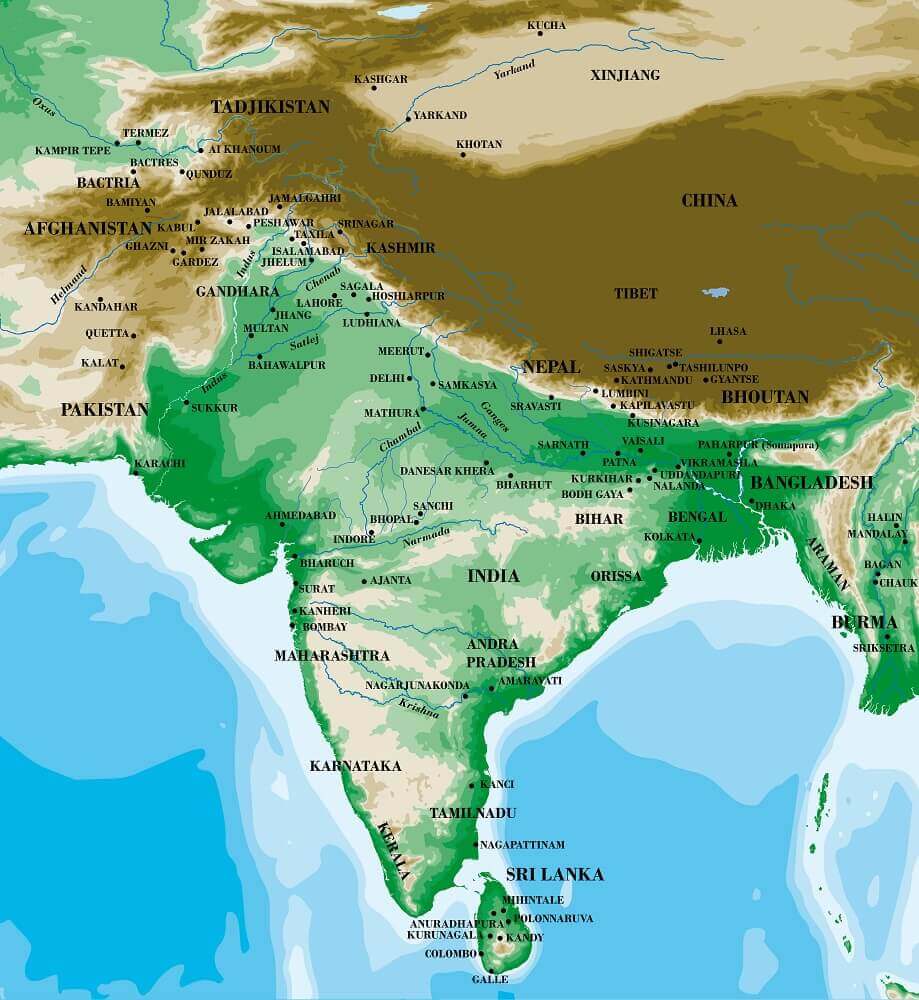
Sri Lanka: between external influences and incessant wars
Sri Lanka also owes its eventful history to some of its rulers. Among them, King Kassapa, known as the Patricide, and who reigned in the fifth century AD, became famous for killing his father and usurping his brother, the legitimate heir to the throne. Aware that the Buddhist clergy would never forgive him for his crime, Kassapa moved his capital and residence to the rock of Sigiriya. He transformed this rock into a citadel and a sophisticated city, modelled on Persian cities, with a geomatic plan of gardens and pools subdivided into four quarters linked by footbridges and canals.
Other more eventful events marked the history of the island. Among them, the invasion of Sri Lanka by the Chola Empire, originating from South India. During this invasion, in the year 993, the Chola emperor Rajaraja annexed the city of Anduradhapura and its kingdom. Soon, most of the island was incorporated into the Chola empire, under the rule of Rajaraja’s son, Rajendra Chola. The Cholas established their capital at Polonnaruwa. During the Chola era, Hinduism became popular among the Sri Lankan population. Some Hindu deities were even integrated with Buddhist beliefs.
The Chola period lasted eight decades and ended with a rebellion led by Vijayabahu I, king of the principality of Ruhuna, located in the south of the island. The Cholas tried to regain control of the territories lost during the rebellion. In particular, they tried to recapture Anuradhapura, proposing an alliance with the Sri Lankan kings against their common enemy, the south Indian Pandya Empire. The Cholas were eventually expelled and the Sri Lankan king Vijayabahu I (1056-1111) ascended the throne. Vijayabahu breathed new life into Buddhism on the island by inviting Burmese monks to revitalize the religion.
Sri Lanka’s period of ephemeral capitals
The Abhayagirivihara, the most powerful monastery in Sri Lanka, located in the ancient capital of Anduradhapura lost its influence when King Parakramabahu decided to unify the three branches of Sri Lankan Buddhism (the Theravada branch of the Mahavihara, the Abhayagirivihara branch, and the Dakkinavihara branch) into one. Parakramabahu is the second king of the so-called Polonnaruwa period, named after the new capital of the island. This period was characterized, in addition to its political troubles, by an unprecedented technical and artistic development as well as by the multiplication of commercial contacts with China and the Arab world.
The prosperity of the Polonnaruwa period came to an end with the invasion organized by Kalinga Magha, king of the Jaffna kingdom, who dethroned king Parakrama Pandya in 1215. Kalinga Magha was himself expelled from Polonnaruwa in 1236. This event marked the end of the period of ephemeral capitals and announced the progressive decline of Sri Lankan power. The capital was thus moved to Dambadeniya before being transferred later to Yapahuwa, for a short period (from 1273 to 1284) under the reign of King Buvanekabahu I. Yapahuwa became the center of political, economic and religious power despite the many battles and invasions that Sri Lanka again experienced.
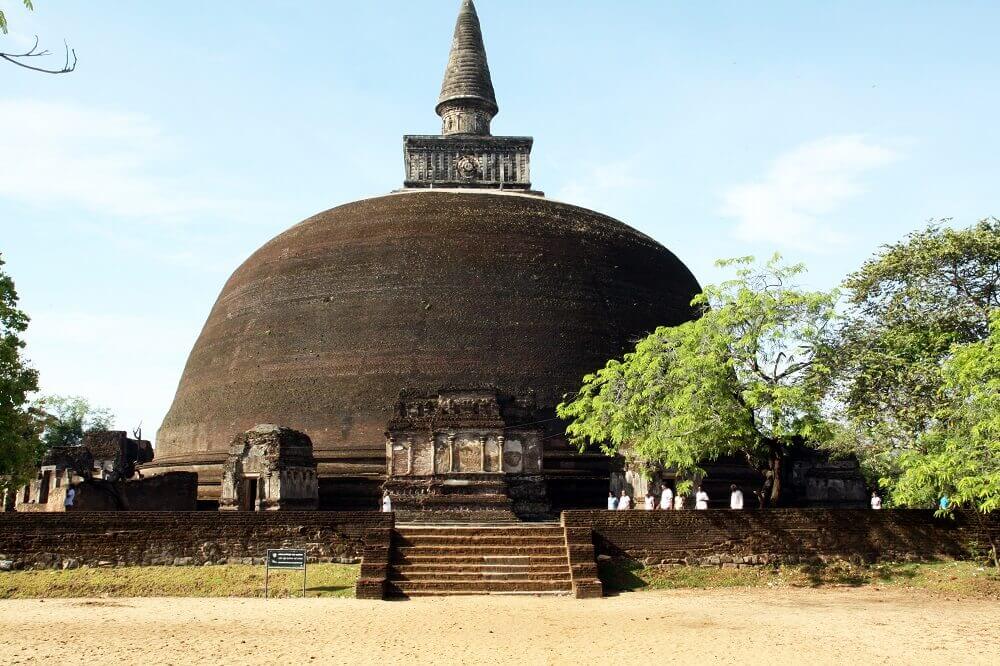
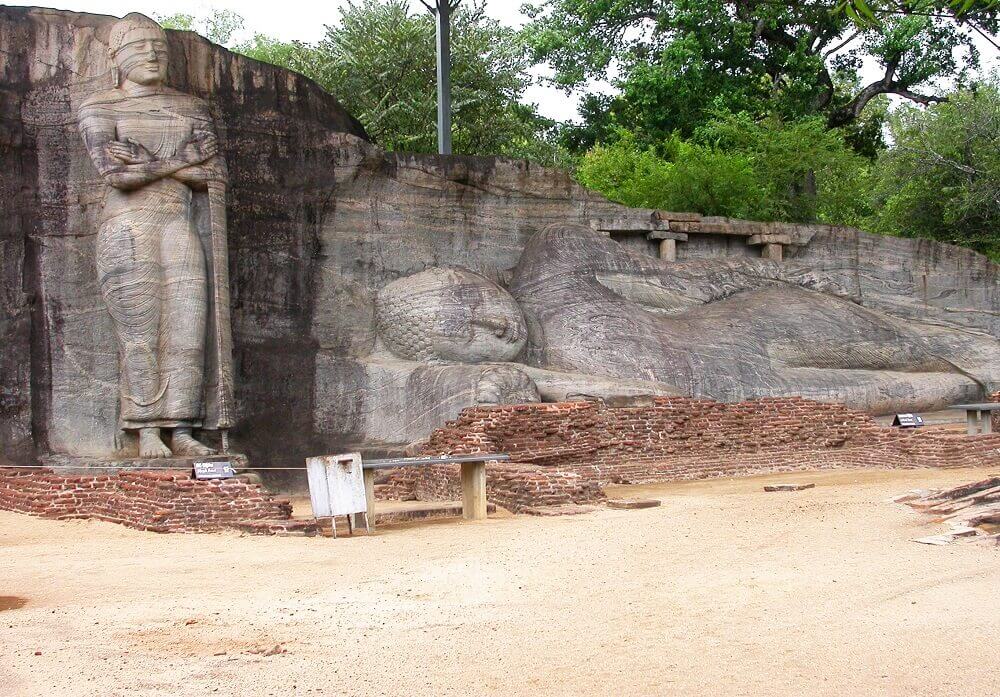
The capital was later transferred to Kurunegala (from 1293 to 1341), then to Gampola (from 1341 to 1408), to Raigama (from 1408 to 1415) and finally to Kotte (from 1415 to 1597). It is at this time that the Sri Lankan kings were confronted with the arrival of the Portuguese, who landed on the island in 1505. The last Sri Lankan kingdom, whose capital was located in Kandy, remained independent until the arrival of the British in 1815.
Sri Lanka’s colonial period
The modern period began in Sri Lanka with the arrival of the Portuguese in 1505. The latter gradually extended their control over the coastal areas of the island. In 1638, the King of Kandy Rajasinha II signed a treaty with the Dutch East India Company to expel the Portuguese from Sri Lanka. This was done in 1656.
After the expulsion of the Portuguese, the Dutch betrayed their promise to Rajasinha II by colonizing the coastal area of Sri Lanka. This was the beginning of the Dutch period. This period lasted until 1815 when Kandy was occupied by the British in the Kandyan War. This war ended the independence of Sri Lanka.
Sri Lanka’s colonial era lasted 400 years, with the island passing successively under the control of the Portuguese, the Dutch and the British. This period did not end until February 4, 1948. On that day, Sri Lanka, renamed Ceylon, gained its independence as the Dominion of Ceylon. The island was thus incorporated into the British Commonwealth. This status was abandoned on May 22, 1972, when Sri Lanka regained its independence as the Republic of Sri Lanka.
In the history of Sri Lanka, reality has often exceeded myth. Over the millennia, the Southeast Asian island has been profoundly influenced by many outside influences, especially Indian. It was notably a land of blossoming for Theravada Buddhism. Jewel of the Indian subcontinent, Sri Lanka became famous for its natural wealth and its privileged position at the center of the maritime routes. Its exceptional location has always made it a coveted land by Indian and European empires. From the very beginning of their history, the Sri Lankans knew how to take advantage of these exchanges to forge their incomparable culture.
Editor: Dr. Izold Guegan
Sri Lanka is a culturally rich and diverse country.
Read more about the unique puppetry traditions here.
Want to know more about magic practices in Sri Lanka? It’s here.
Bibliographical references:
- Osmund Bopearachchi, “Sri Lanka. L’archéologie du bouddhisme”, Dossiers Archéologie, 254, June, 2000, pp. 68-77.
- Osmund Bopearachchi, Roots of Sri Lankan Art, Department of Archaeology, Colombo, 2020.
- H.C. Ray (ed.) History of Ceylon, vol. I, Ceylon University Press, Colombo, 1959.
- François Thierry, Le Royaume du Lion, Ceylan connu des Chinois des origines à la fin des Song, Brepols, Turnhout, 2019.
- Ulrich von Shroeder, Buddhist Sculptures of Sri Lanka, Visual Hharma Publications Ltd., Hong Kong, 1990.
- D.P.M. Weerakkody, Taprobanê: Ancient Sri Lanka as known to Greeks and Romans, Brépols, Turnhout (Belgium), 1997.




